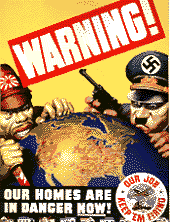The first picture postcard, addressed to Theodore Hook of London, England, had a hand-painted scene on the front. The first printed picture postcard, addressed to Leon Bernardeau, appeared in France in 1870, ushering in the postcard's Pioneer Era. The first American postcard appeared in 1873 produced by the Morgan Enveloppe Factory. Most postcards were issued by the American post office until 1898 when other companies started printing them en masse.
The picture postcard's Golden Age was ushered in by the World's Columbian Expo in Chicago in 1893 where many postcards were printed with images of the various buildings there. Another building which was reproduced many times was the Eiffel Tower, also the product of a World's Fair.

zcache.com
The divided back of the postcard, featuring writing on one half and the address on the other, appeared in 1907. The postcard's popularity skyrocketed by 1908 with 677 million postcards mailed in the United States that year.
By 1915, the tables turned as German printed postcards, including the beautiful Christmas scenes, were banned in America during the First World War. The nature of postcards changed as well. No longer used for just advertising a pretty seaside resort, they were now used to promote social issues (The Women's Temperance Parade Float, 1913)

Women's Temperance Movement postcard courtesy www.zazzle.com.
or war propaganda (The Allies Onward to Victory, England) and (Guten Kameraden, Netherlands).
Netherlands postcard courtesy ww1-propaganda-cards.com.
The white border era was ushered in in 1916 and lasted until 1930. The higher costs of postcards decreased their quality significantly. Various groups used postcards to promote their causes. One American card from Oklahoma City in 1924 features the "Ku Klux Klan Marching at Night". another postcard is called "Labor on Trial" based on the Gastonia prisoners.

Oklahoma City KKK circa 1924 courtesy vintagepostcards.com.
The latter stages of this era saw the introduction of the cartoon-style saucy postcards in Britain, featuring innuendo and double-entendre. At its peak, 16 million of these saucy postcards were sold. The 1950's, however, saw a crackdown on the saucy cards by the Conservative government saying they showed a poor moral example to the public.
The Linen Card era lasted from 1930 to 1945. A huge improvement over the white border cards, these cards were made of linen type paper stock. The building of America's highway infrastructure can be traced on postcards from this time period.

American postcard showing Route 66 courtesy ebaystatic.com.
The chrome era of postcards started in 1939 and can be traced until the present. Chrome postcards are glossy coloured cards. Launched by the Union Oil Company they were sold in their western service stations in the U.S. Once again, with the Second World War, propaganda filled postcards. One postcard featured a globe with two figures hiding behind it, Emperor Hirohito holding a dagger and a moustachioed Hitler with a rifle. The caption reads: "Warning, our homes are in danger now!"

American propanganda postcard courtesy teacheroz.com.
Americans saw images of Uncle Sam pointing at them with the inscription "I Want You for U.S. Army".

questgarden.com
Note: For more information, read The Picture Postcard & Its Origin, Frank Staff, 1996.
You have really done the brilliant work dude!! I’m looking forward for more, hope you will never disappoint me.
ReplyDeleteevery door direct mail postcards printing